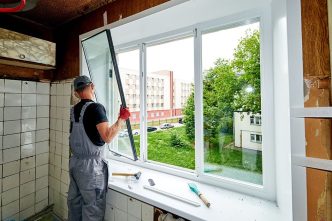How Glass is Made
Written by: Bill Herren
Glass making in some form dates back approximately 4,500 years. At its inception, glass making was a rare art, creating sought after pieces of significant value. Over the millennia, however, glass making has evolved to become commonplace and standard. The process of making glass involves combining materials and heating them to excessively high temperatures.
Ancient glass making may have originated by accident when people were heating ceramic pottery during the production process. With a certain sequence of steps, these materials would become glass after firing. Eventually, the process evolved and glass makers worked in workshops to produce glass. The materials necessary for glass making were sand and nitrate. With the application of extreme heat, the materials melded together to create glass. Glass makers could vary the color of the glass they created by using sand with different natural elements. For example, sand containing high amounts of iron could result in green glass. Sand containing manganese could result in yellow or purple glass. By adding cobalt or copper to the material mixture, it may have been possible to make blue glass.
After glass makers made the initial pieces of glass, they allowed them to harden into chunks. From this point, they would transfer the chunks of hard glass to glass workers, who could transform them into various items and objects. The glass workers would need to reheat the chunks of glass to make them malleable once again. Once hot, they would shape or blow the glass into various shapes to make glass items.
Free-blown glass manufacturing was prevalent from the origins of glass working until the mid-19th century. The free-blown process involved using a warm blowpipe and placing a piece of warm glass onto the end of it. By rolling the blowpipe while blowing air gently into the end of the pipe, the glass would begin to develop a bottle shape. Constant rotation was necessary during this process to ensure that the bottle assumed a uniform and symmetrical shape. The glass maker continued to blow while rotating so the bottle became the desired size and shape. The next stage of the process involved gently molding the bottle with tongs called “pucellas.” This molding would enable the glass maker to mold the neck and the opening of the bottle while it began to cool. Finally, the glass worker would remove the glass bottle from the blow?pipe using the “wetting off” method. To do this, the glass worker would use a wet wooden paddle to mark the spot where he wanted to separate the bottle from the blowpipe. The cold water on the wooden paddle would weaken the hot glass. A firm tap on the bottle would break it off at the desired location.
Slowly, glass-making processes changed as equipment and materials improved. Cooling methods, distillation vessels, and the use of isopropyl alcohol as a solvent are three areas in which glass making changed over the course of history. The bottle-making process changed with the invention of bottle molds to shape the body and base of bottles. The molds were made out of wood, metal, or clay. The glass worker would pour the molten glass into the mold and allow it to cool. Different parts of a bottle would be made separately in different molds and the glass worker would join them later.
In the last century, the invention of machines has further changed both the design of glass and the efficiency of the glass-making process. Modern glass-making materials include dolomite, limestone, sand, and soda ash. Some glass-making processes also include cullet in the list of materials. Cullet is broken glass, derived from recycled glass products. To make glass, the manufacturer combines the materials and heats them in a large furnace. Once heated and melded together, the molten glass product moves over a conveyor belt made of hot metal. The manufacturer then cools the initial glass down to room temperature and cuts it into smaller pieces for final shaping or manufacturing, depending on the purpose of the glass. To formulate the raw glass into bottles, the manufacturer re-melts it and pours it into forming machines that mold it into bottle shapes. The final step involves cooling the bottles to eliminate any stresses and to strengthen the glass.
These resources offer additional information about glass making and its history:
- Glass and Other Ceramics
- How Glass Was Made in the Ancient World
- Medieval Stained Glass Science
- Window Glass
- Glassmaking Technique: Mold Blown Glass
- Is Glass Liquid or Solid?
- History of Glass
- Advances in 13th Century Glass Manufacturing and Their Effect on Chemical Progress
- Glass Manufacturing
- Glass in Nature
- Learn About Glass
- Ancient Glass
- How Glass is Made
- Roman Glass
- All About Glass
| Wood Windows and Doors | Additional Window Options | Home Services |
|---|---|---|


